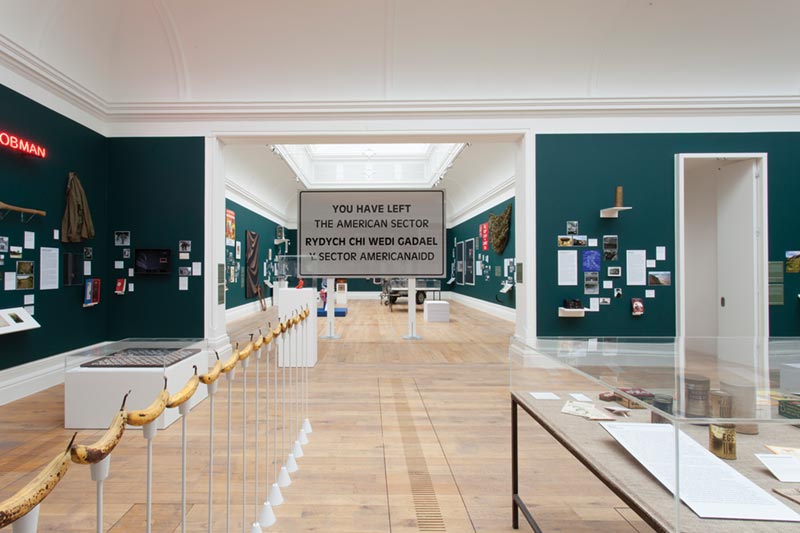Blackouts, Bananas and Boundaries From Planet 221

Jen Loffman reviews ‘War II’ at Oriel Mostyn – a former wartime ‘Donut Dugout’, and reflects on how the exhibition subverts rituals of WWII remembrance through both artefacts of the time and responses by contemporary artists.
Llandudno is a place I associate with childhood, a place from the past, not quite real. I remember my Dad driving the family to the top of the Great Orme and it was a death-defying stunt. I’d sit in the back of the car with my two brothers and we’d be holding our breath because there was every chance this giant family hatchback would start rolling back down again into the sea. But thanks to my Dad’s undisclosed superpower, it never did. I remember our trips down Rhyl promenade; a magical place with an outdoor lido and Geronimo’s Palace of Fun. It had multicoloured ball pools, enchanted slides and those rollers you had to squeeze through to get to the other side. I was in some tropical Narnia. And we’d sleep at my Grandma’s old house in Colwyn Bay, where, I swear, her collection of Toby Jugs would start talking to each other at night. She had such strange things like a bureau and a shoehorn and jars of potions at the back of the cupboard from before I was born.
I travelled back to north Wales in November to visit the exhibition ‘War II’ at Mostyn Gallery in Llandudno. This time, though, the experience of driving down Rhyl promenade was comparatively low-key. It was a drizzly morning and people were just going about their daily business. The weirdest thing was how realistic it all seemed. When you bring the past back in to the present, it all seems so bizarre. So, as I pondered my distorted recollections of otherworldly Rhyl, I wondered what history actually is. If you think of it as an accumulation of memories, and memories are these bizarre mutations of actual events, how authentic can our understanding of the past really be? It seemed an apt question as I prepared to enter the gallery and learn about the history of Llandudno during the second world war.

War II at Mostyn Gallery © Oriel Mostyn Gallery
About the author
Jen Loffman is a postgraduate Art History student at Aberystwyth School of Art. Her research focuses on British art in the 1930s and ’40s and the tension between Modernist and traditional ways of working. She is particularly interested in painters and printmakers associated with Neoromanticism.
